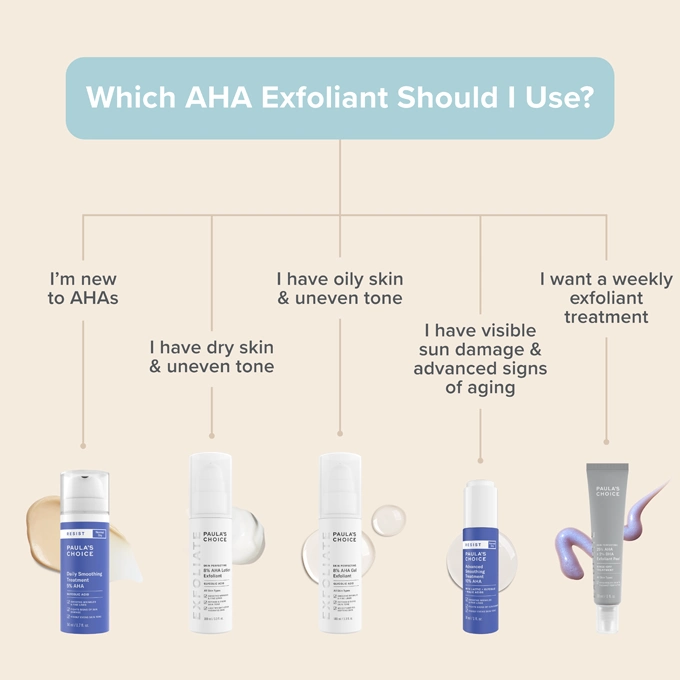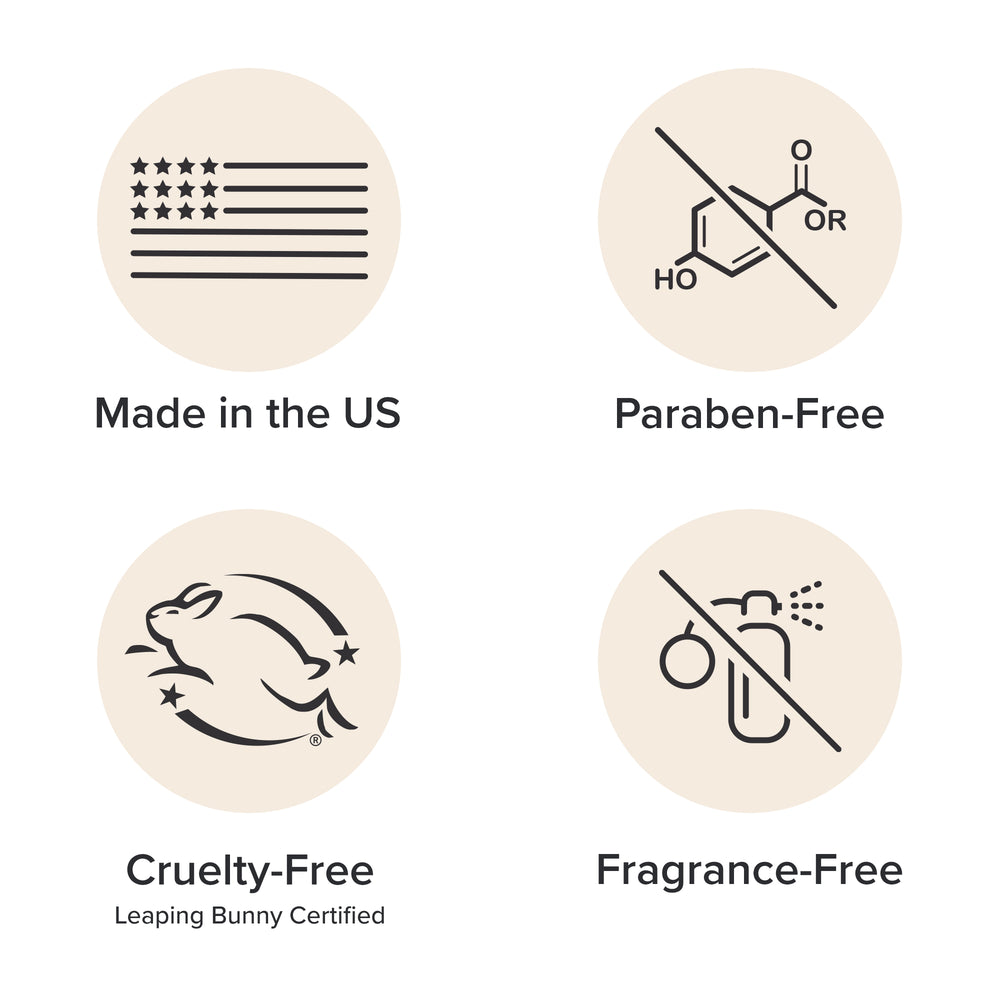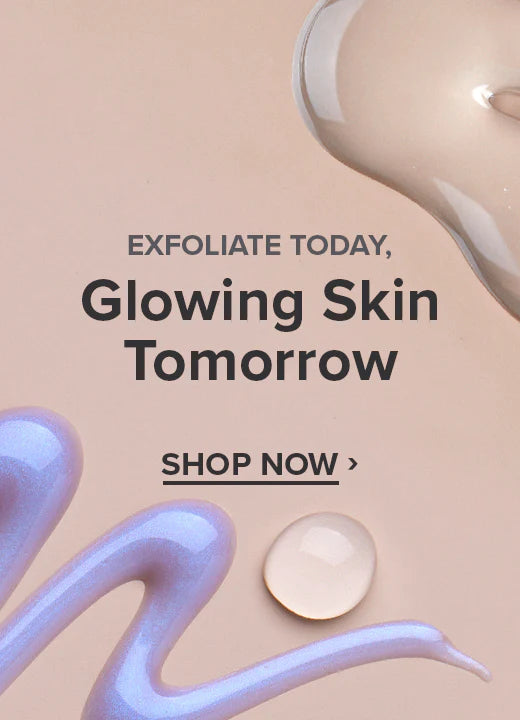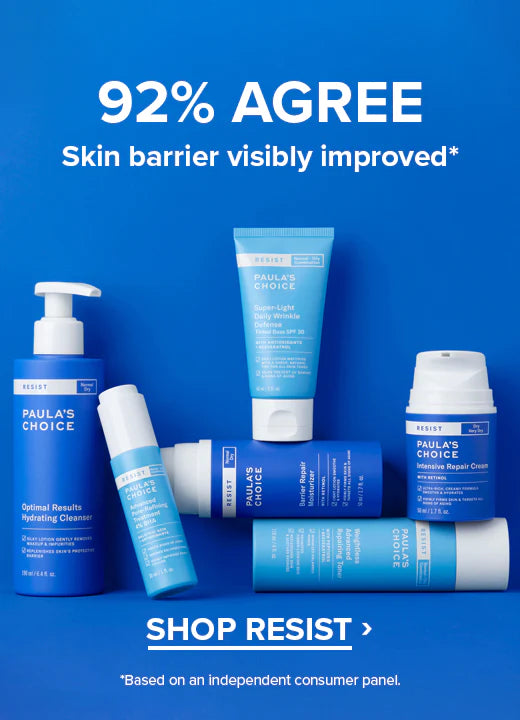Written by: Bryan Barron
Medically Reviewed by: Corey L. Hartman MD Board-Certified Dermatologist
Updated on:1/30/2024
In this article:
What is glycolic acid?
What is glycolic acid used for?
Is glycolic acid good for all skin types?
Glycolic acid benefits
Choosing the right glycolic acid product
Glycolic acid exfoliants
Is glycolic acid right for me?
What concentration of glycolic acid is effective?
Can you use glycolic acid with retinol?
Glycolic acid side effects
A myriad of things, from daily environmental damage to simply getting older, impair our skin’s ability to renew itself as it once did. This leads to a buildup of dead, dull surface skin that prevents your complexion’s naturally healthy appearance from shining through.
Glycolic acid, particularly when formulated as a leave-on exfoliant, expertly tackles dead skin cell buildup to help achieve more youthful, vibrant and even skin. An integral part of any well-rounded skin care regimen looking to tackle texture, tone, and signs of aging, routine use of this AHA (alpha hydroxy acid) ensures skin's radiance in the long term. Who doesn’t want that?
While there are different kinds of AHAs, including lactic, malic, citric, and tartaric acids, the one with the most long-term research proving its effectiveness is glycolic acid. Let’s get into all things glycolic acid, including all of its benefits, how to use it and finding the best glycolic acid skin care product for you.
What is glycolic acid?
Glycolic acid is a type of AHA that is most well-known for its ability to exfoliate, helping shed dead skin while also increasing skin hydration (1). It occurs naturally in sugar cane but is most effective when synthesized in a lab, where its potency and concentration are optimized for use in skin care. Using plant sugars for their glycolic acid content is an option, but the bulk of the research on glycolic acid’s benefits for skin is about the synthetic form because this type of glycolic acid can be optimized for effectiveness, purity, stability, and pH—all of which are critical for creating effective glycolic acid products (2).
What is glycolic acid used for?
Glycolic acid is most commonly used as a leave-on exfoliant for skin. Like other AHAs, it unglues the bonds of dead skin trapped to the surface, so that spent, dull cells can slough off and reveal the healthier, smoother skin hiding underneath.
This type of exfoliation can be used to address numerous skin concerns, including sun damage, uneven tone, rough, flaky patches of skin, fine lines and wrinkles.
Glycolic acid is also a star player in high-strength chemical peels that dermatologists and other trained professionals use during in-office treatments (3).
Is glycolic acid good for all skin types?
Glycolic acid is safe for all skin types and has a long history of benefiting skin (4). However, glycolic acid is best suited for those with dry-to-normal skin with signs of aging, uneven tone and those experiencing stubborn signs of environmental damage. It’s also great for those with oily or breakout-prone skin (5).
This acid is one of the most powerful AHAs due to its small molecule size, which allows glycolic acid to slip past skin’s surface and penetrate a bit further. Although this penetration makes glycolic acid more beneficial, it also increases the chances of sensitivity. If you’re looking to reap the benefits of glycolic acid and are nervous about sensitivity, experiment with usage cadence and make sure to use sunscreen during the day and a nourishing moisturizer at night.
Glycolic acid benefits
The major benefits of using an exfoliant with glycolic acid for your face include:
- A smoother, brighter and more even-toned complexion.
- Reduction in the appearance of dark spots that can appear after breakouts (6).
- Skin looking and feeling younger through visibly minimizing the look of fine lines and wrinkles while also helping firm skin’s architecture (7).
- Studies also show that glycolic acid significantly increases skin hydration. Not only is it a humectant, it also helps skin make substances like mucopolysaccharides, which boost skin’s ability to stay hydrated by increasing its natural content of hyaluronic acid (8).
- Addressing the signs of sun damage on skin.
Choosing the right glycolic acid product
Not all glycolic acid skin care products are created equally! No matter your skin type or concerns, The pH of a glycolic acid product is an important factor. A pH between 3 and 4 is considered the optimal range for glycolic acid to work effectively as an exfoliant. Straying outside of this range can result in either a product that is irritating to skin or ineffective at exfoliating.
Beyond this, the product’s formulation shouldn’t contain any potentially sensitizing ingredients, like fragrance, essential oils or denatured alcohol. These ingredients can hinder skin’s health, causing both short-and long-term damage.
The right glycolic acid product also shouldn’t be one note. What do we mean by this? Well, the best glycolic acid exfoliant, toner or peel shouldn't just contain the exfoliating acid! It works best when supported with other skin-beneficial ingredients, like soothing agents and barrier repairing elements. Your skin will also love the added ingredients and see further benefits.
Glycolic acid exfoliants
When it comes to glycolic acid exfoliants, there are many brilliantly formulated options to choose from. Here, we've highlighted just a few to make the selection process easier for you.
If you’re new to this type of exfoliation, a mild 5% glycolic acid lotion is a great choice for daily use.
If you’re ready to take on a mid-strength level exfoliant, an 8% gel exfoliant can help promote radiance and address early signs of aging.
If you’re looking for something more powerful to tackle deeper wrinkles, dullness, and stubborn signs of sun damage, we recommend using a higher strength glycolic acid serum that can be added seamlessly into your routine.
Want smoother skin beyond the face? A glycolic acid body lotion is the perfect way to go for baby-soft skin on arms, legs, elbows, and knees.

Is glycolic acid right for me?
When determining whether glycolic acid is right for you, skin type and skin concerns should be considered. Glycolic acid is typically the ideal exfoliant for those with normal to dry, sun-damaged skin, thanks to its ability to enhance natural moisturizing factors within skin. It’s also a great AHA option for combination to oily skin, as it helps normalize oil production. However, that doesn’t mean others can’t benefit from using glycolic acid.
A glycolic acid exfoliant that comes in a weightless gel consistency or in a glycolic acid toner format can work great for any skin type to revitalize skin tone and reveal smoother, firmer-looking skin.
What if you have clog-prone, oily/combination skin? Salicylic acid (also known as a beta hydroxy acid or BHA) is considered the optimal exfoliating option due to its oil-soluble nature that allows it to penetrate and decongest pores. BHA also has extra soothing properties that make it the preferred exfoliant for sensitive skin.
Can’t decide? It’s fine to experiment with both types of exfoliants as part of your skin care routine – you can alternate days of usage or use one in the morning and one at night, depending on your preference.
What concentration of glycolic acid is effective?
Concentrations between 5-10% of glycolic acid are considered most effective for exfoliation on a regular basis. There are also more intense, rinse-off glycolic acid peels featuring higher concentrations of AHAs, which you can use at home on an occasional basis, about once a week, to improve the look of deeper wrinkles.
Can you use glycolic acid with retinol?
Yes! Glycolic acid and retinol (as well as other retinoids) are often used alongside one another in clinical settings to help address signs of aging, sun damage and breakout-prone skin (9). A 2015 study even suggests the two work in tandem to tackle the appearance of dark spots related to the occurrence of breakouts (10).
Although glycolic acid and retinol, as well as other vitamin A derivatives, complement one another, it’s recommended to use them at different times of the day or different days. Start implementing both into your nighttime routine on different days 1-2 times a week. After noting how skin responds, you can increase usage, potentially using glycolic acid in the morning and following with a broad-spectrum sunscreen SPF 30+ in the morning and applying retinol or a retinoid at night, following with a soothing barrier-focused moisturizer.
Glycolic acid side effects
Glycolic acid is a skin-safe exfoliating superstar, however, like many other ingredient powerhouses it can cause side effects on certain skin types.
Glycolic acid side effects include:
- Increased skin sensitivity to sun (which is why it’s integral to wear SPF 30+ when using an AHA).
- Redness or flaking. If you experience this, decrease your product use cadence and focus on using nourishing ingredients and barrier-boosting moisturizers.
You might have heard that AHA usage, including glycolic acid application, can cause dark spots. However, it’s only the overuse of these ingredients that can cause such. Stick to a casual cadence of a well-formulated 5-10% exfoliating product and you should be A-OK!
Learn more about exfoliants.
References for this information:
1. Molecules, April 2018, ePublication
2. International Journal of Cosmetic Science, April 2021, pages 419-431
3. Journal of Clinical and Diagnostic Research, November 2022, pages 5-8
4. International Journal of Toxicology, Sep/Oct 2017, 15S-21S
5. International Journal of Research in Engineering, Science and Management, October 2020, pages 54-55
6. The Journal of Clinical and Aesthetic Dermatology, June 2022, pages 48-52
7. Journal of Cosmetic Dermatology, February 2021, pages 513-521
8. Dermatologic Surgery, May 2001, pages 429-433
9. The Journal of Clinical and Aesthetic Dermatology, October 2011, pages 40-48
10. Indian Dermatology Online Journal, Mar-Apr 2015, pages 84-88








